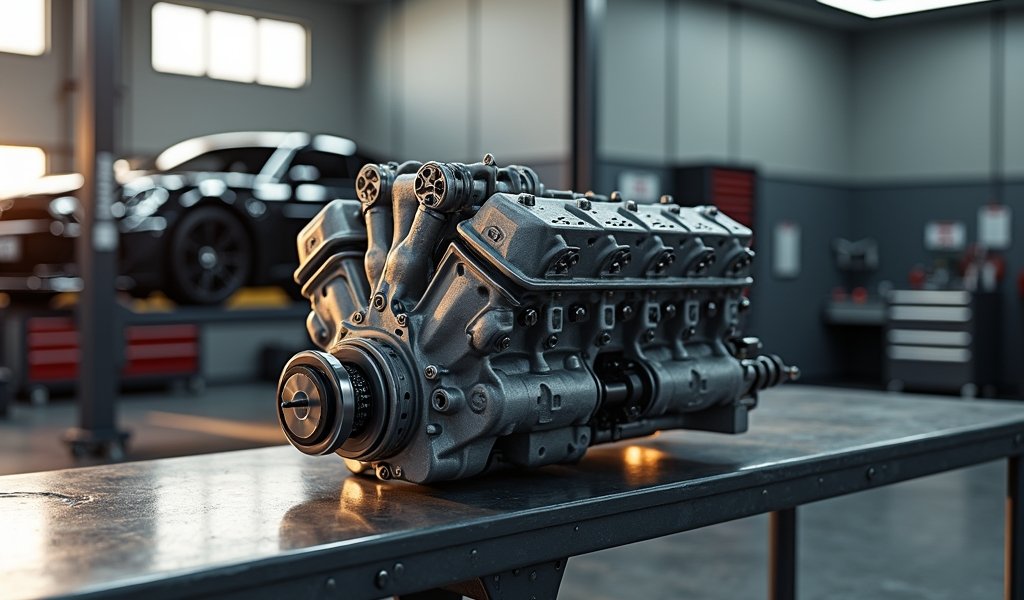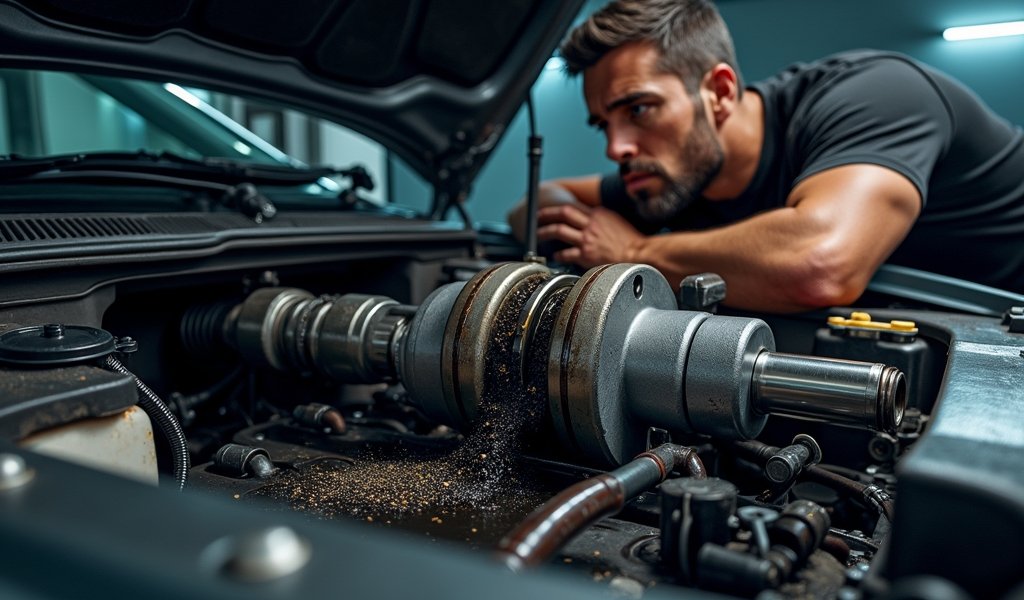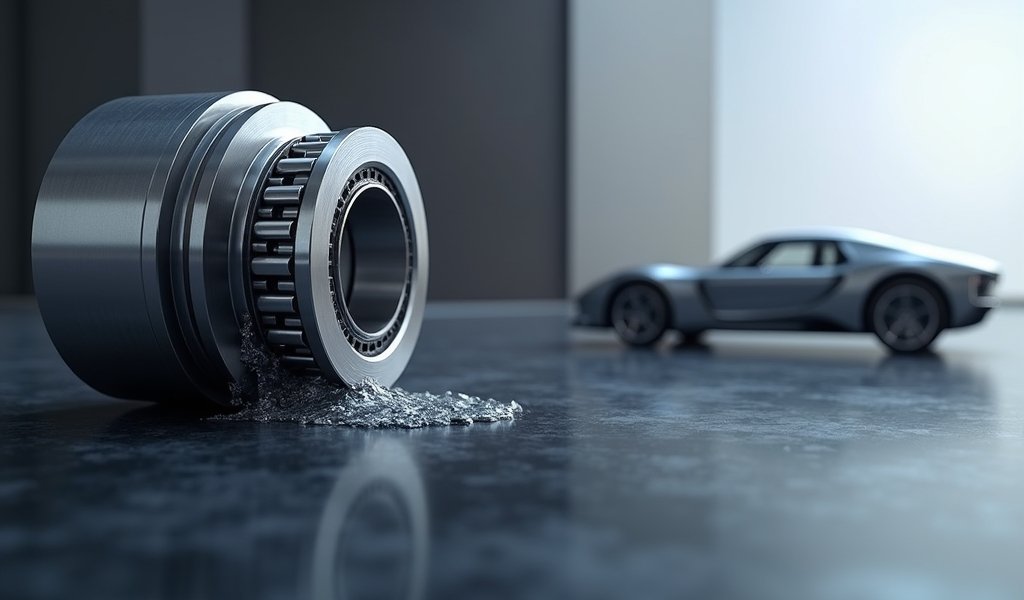Overview
This article provides seven essential tips for achieving optimal connecting rod bearing clearance in engine building, emphasizing how this critical measurement—typically between 0.0015″ and 0.0025″—directly impacts engine longevity and performance. Proper clearance creates the ideal oil film between components, preventing premature failure while requiring quality measuring tools, adherence to manufacturer specifications, consideration of oil viscosity, accounting for thermal expansion, thorough component inspection, absolute cleanliness, and correct assembly techniques.
Table of Contents
- Understanding Connecting Rod Bearing Clearance
- Why Proper Clearance Matters
- Measuring Connecting Rod Bearing Clearance
- Tip 1: Use Quality Measuring Tools
- Tip 2: Follow Manufacturer Specifications
- Tip 3: Consider Oil Viscosity
- Tip 4: Account for Thermal Expansion
- Tip 5: Inspect for Irregularities
- Tip 6: Maintain Cleanliness
- Tip 7: Proper Assembly Techniques
- Conclusion
- Frequently Asked Questions
Understanding Connecting Rod Bearing Clearance
Connecting rod bearing clearance is one of those critical yet often overlooked aspects of engine building that can make or break your motor’s reliability. As a mechanic who’s rebuilt countless engines over the years, I can tell you that getting this clearance right is absolutely essential for engine longevity. Simply put, connecting rod bearing clearance refers to the small gap between the connecting rod bearing and the crankshaft journal when assembled.
This tiny space—we’re talking thousandths of an inch—allows for the formation of a crucial oil film that prevents metal-to-metal contact during engine operation. Too tight, and you’ll create excessive friction and heat. Too loose, and you’ll lose oil pressure and potentially cause catastrophic engine damage. It’s like Goldilocks—the clearance needs to be just right.
Throughout my career, I’ve seen engines fail prematurely because someone overlooked this critical measurement. The good news? With the right knowledge and tools, establishing proper connecting rod bearing clearance isn’t particularly difficult. Let’s dive into why this matters so much and how to get it right every time.
Why Proper Clearance Matters
The consequences of incorrect connecting rod bearing clearance can be severe and expensive. When clearance is too tight, oil can’t properly flow between the bearing and journal surfaces. This restricted oil flow creates excess heat and friction, which can lead to bearing seizure—a situation where the bearing material actually welds itself to the crankshaft journal. I’ve seen engines lock up solid from this condition, resulting in bent connecting rods or even cracked blocks.
On the flip side, excessive clearance isn’t any better. Too much space allows oil pressure to drop as fluid escapes through the larger gap. The oil film becomes unstable, allowing metal-to-metal contact during high-load conditions. This causes rapid bearing wear, creates that dreaded “rod knock” sound, and can eventually lead to complete bearing failure and catastrophic engine damage.
Proper connecting rod bearing clearance directly impacts several key aspects of engine performance:
- Oil pressure stability throughout the RPM range
- Heat dissipation from critical rotating assembly components
- Noise levels during operation
- Long-term reliability and engine longevity
- Power output and efficiency
According to a Society of Automotive Engineers study, approximately 43% of catastrophic engine failures can be traced back to bearing-related issues, with improper clearance being a leading cause. That’s why taking the time to get this right is so important for any engine build or rebuild.

Measuring Connecting Rod Bearing Clearance
Before diving into our tips, let’s establish how connecting rod bearing clearance is properly measured. There are two primary methods used by professional engine builders: Plastigage and direct measurement with micrometers.
Plastigage is a plastic strip material that compresses when squeezed between the bearing and journal. After torquing the rod cap to specification and then removing it, the width of the crushed strip is compared to a provided scale to determine clearance. While not as precise as micrometers, Plastigage is affordable, accessible, and perfectly adequate for most rebuilds.
For more precision, the micrometer method involves measuring both the crankshaft journal diameter and the inside diameter of the installed bearing, then calculating the difference. This requires more specialized tools but provides the most accurate results.
Regardless of the method you choose, the process must be conducted with meticulous attention to detail. Now, let’s get into my seven essential tips for achieving optimal connecting rod bearing clearance.
Tip 1: Use Quality Measuring Tools
I can’t stress this enough—don’t cheap out on measuring tools. The difference between a perfect engine and a potential failure often comes down to measurements of 0.0005″ (half a thousandth of an inch) or less. That level of precision requires quality instruments.
If you’re using Plastigage, make sure it’s fresh (not old and brittle) and stored properly. For micrometers and dial bore gauges, invest in calibrated tools from reputable manufacturers. I’ve been using Mitutoyo micrometers for decades, and they’ve never let me down. Before any measurement session, verify your tools’ accuracy with calibration standards.
Remember that temperature affects measurements, too. Your crankshaft, bearings, and measuring tools should all be at the same temperature—ideally room temperature around 68-70°F (20-21°C). I’ve seen machinists make the mistake of measuring components right after cleaning them with cold solvent, resulting in inaccurate readings.
Precision matters here more than almost anywhere else in engine building. A difference of just 0.001″ can be the margin between optimal operation and premature failure.
Tip 2: Follow Manufacturer Specifications
This might seem obvious, but I’ve seen plenty of enthusiast builders ignore factory specs in favor of “what my buddy told me” or outdated rules of thumb. Each engine design has specific bearing clearance specifications based on factors like operating temperature, oil delivery system, metallurgy, and intended use.
Factory service manuals or bearing manufacturer data sheets provide the target clearance ranges you should aim for. For most production engines, connecting rod bearing clearance typically falls between 0.0015″ and 0.0025″, but this can vary significantly based on engine design and application.
High-performance engines often run on the looser side of the spectrum to accommodate increased heat and RPM, while everyday commuter engines might use tighter clearances for quieter operation and longevity at moderate loads. If you’re building a modified engine, consult with the bearing manufacturer about your specific application—most have technical support staff who can provide guidance based on your build specifications.
When in doubt, the factory specification is your safest bet. Engineers spent thousands of hours determining these specifications, and deviating without a thorough understanding of the consequences can lead to problems.
Tip 3: Consider Oil Viscosity

The oil you plan to use should influence your bearing clearance decisions. Thicker oils (higher viscosity) generally work better with slightly larger clearances, while thinner oils perform optimally with tighter clearances. This relationship is critical but frequently overlooked.
Modern engines have trended toward thinner oils for improved fuel economy and cold-weather performance. If you’re rebuilding an older engine designed for 10W-40 but plan to run 0W-20, you might need to adjust your clearance targets accordingly. Research from the Machinery Lubrication Institute suggests that bearing clearance should be adjusted by approximately 0.0005″ for each 10-point change in oil viscosity.
Here’s a general guideline I’ve developed over years of engine building:
- 0W-20, 5W-20: 0.0015″ to 0.0020″ clearance
- 5W-30, 10W-30: 0.0018″ to 0.0023″ clearance
- 10W-40, 15W-40: 0.0020″ to 0.0025″ clearance
- Racing oils (15W-50+): 0.0022″ to 0.0028″ clearance
These are just starting points—always defer to manufacturer specifications when available. The key takeaway is that oil viscosity and bearing clearance work together as a system, not as independent factors.
Tip 4: Account for Thermal Expansion
Engines operate at temperatures far above ambient conditions, and different materials expand at different rates when heated. This thermal expansion factor must be considered when setting connecting rod bearing clearances.
Aluminum connecting rods, for example, expand more than steel rods when heated. If you’re using aluminum rods, you’ll typically want to set clearances toward the upper end of the specification range to accommodate this increased expansion. The same principle applies to different bearing materials—copper-lead bearings have different expansion properties than aluminum-silicon bearings.
Operating temperature also matters. An engine that will see extended high-RPM use or heavy loads will generate more heat and might benefit from slightly increased clearance. Conversely, an engine that primarily operates at moderate temperatures might perform better with clearances on the tighter side of the specification.
When working with aftermarket components, contact the manufacturer for their specific recommendations. Many performance connecting rod manufacturers provide detailed clearance specifications based on their extensive testing and material properties.
Tip 5: Inspect for Irregularities
Even with perfect measurements, irregularities in components can create clearance problems. Before assembly, thoroughly inspect all parts for issues that might affect bearing clearance.
Check crankshaft journals for taper, out-of-round conditions, or scoring. A journal might measure correctly at one point but be tapered or egg-shaped, creating variable clearance as the engine rotates. Use a micrometer to measure journals at multiple points, both along the length and around the circumference.
Inspect connecting rod big ends for distortion. After machining or years of service, connecting rods can develop subtle distortion that affects bearing fit. A quality machine shop can check rod roundness and parallelism and correct any issues before assembly.
Examine bearings for manufacturing defects like uneven thickness or material flaws. I always measure bearing thickness at multiple points with a micrometer. While rare, I’ve occasionally found brand-new bearings with thickness variations that would have created clearance problems.
This inspection stage is your last line of defense against problems that measurements alone might not catch. Take your time here—it’s much easier to address these issues before the engine is assembled.
Tip 6: Maintain Cleanliness
Cleanliness might not seem directly related to clearance, but it absolutely is. Even microscopic debris can affect your measurements and, more importantly, compromise the bearing’s ability to function properly within its designed clearance.
When measuring and assembling, maintain surgical levels of cleanliness. A single human hair is about 0.003″ thick—thicker than your entire bearing clearance! Even fingerprints contain oils and acids that can affect bearing surfaces.
Use lint-free cloths and clean, filtered solvents when handling components. Work in a clean, dust-free environment whenever possible. Before taking critical measurements, clean both the measuring tools and the surfaces being measured.
During final assembly, lubricate bearings and journals with clean engine oil or assembly lube. This not only provides initial lubrication but also helps trap any remaining microscopic particles that might otherwise cause damage during the first engine startup.
I’ve seen perfectly measured bearings fail prematurely simply because a tiny metal chip or piece of dirt was trapped between the bearing and journal during assembly. Don’t let all your careful measurement work go to waste because of contamination.
Tip 7: Proper Assembly Techniques
The way you assemble components significantly impacts the actual running clearance of your engine. Even with perfect measurements, improper assembly techniques can create clearance problems.
Always follow proper torque sequences and specifications when tightening connecting rod bolts or nuts. Improper torquing can distort the rod and bearing, creating uneven clearance. Most connecting rods require a specific sequence and often multiple stages of tightening.
If you’re using aftermarket connecting rods, pay close attention to the manufacturer’s instructions. Some high-performance fasteners use stretch measurement rather than torque specifications. Others might require special lubricants on threads and under bolt heads or nuts.
Be mindful of the orientation of both the connecting rod and the bearings. Many bearings have an oil hole or groove that must align with the corresponding passage in the rod. Installing bearings backward is a common mistake that can starve journal surfaces of oil despite having correct clearance measurements.
Finally, verify your work. After assembly, rotate the crankshaft by hand to ensure smooth, binding-free operation. Listen and feel for any unusual resistance that might indicate a clearance issue. This final check has saved many engines from damage.
Conclusion
Connecting rod bearing clearance may seem like a small detail in the grand scheme of engine building, but it’s one of those critical factors that separate reliable, long-lasting engines from problematic ones. The thin film of oil maintained by proper clearance is all that stands between normal operation and catastrophic failure.
By following these seven tips—using quality tools, respecting manufacturer specifications, considering oil viscosity, accounting for thermal expansion, inspecting for irregularities, maintaining cleanliness, and using proper assembly techniques—you’ll set yourself up for success with your engine build or rebuild.
Remember that connecting rod bearing clearance isn’t an isolated measurement but part of a complete rotating assembly system. It works in concert with main bearing clearance, oil pressure, oil viscosity, and operating conditions to keep your engine running smoothly for years to come.
Whether you’re rebuilding a classic muscle car engine, refreshing a daily driver, or building a high-performance race motor, taking the time to get connecting rod bearing clearance right will pay dividends in reliability, performance, and peace of mind. Your engine’s rotating assembly will thank you with thousands of trouble-free miles.
Frequently Asked Questions
What happens if connecting rod bearing clearance is too tight?
Too tight clearance restricts oil flow, creating excess heat and friction. This can lead to bearing seizure, where the bearing material welds to the crankshaft journal, potentially causing catastrophic engine failure.
What happens if connecting rod bearing clearance is too loose?
Excessive clearance causes oil pressure drops and allows for metal-to-metal contact during high loads. This results in the classic “rod knock” sound, accelerated bearing wear, and eventual complete bearing failure.
What is the typical connecting rod bearing clearance for most engines?
Most production engines specify connecting rod bearing clearances between 0.0015″ and 0.0025″ (0.038mm to 0.063mm). Always refer to your specific engine’s factory specifications for the correct range.
Can I reuse connecting rod bearings?
No, connecting rod bearings should never be reused during an engine rebuild. They conform to the crankshaft journal during use and will not seat properly when reinstalled.
How do you check connecting rod bearing clearance without special tools?
Plastigage is an affordable option that requires no special tools beyond basic hand tools. It’s a plastic strip that compresses between the bearing and journal, allowing you to measure clearance after disassembly.

